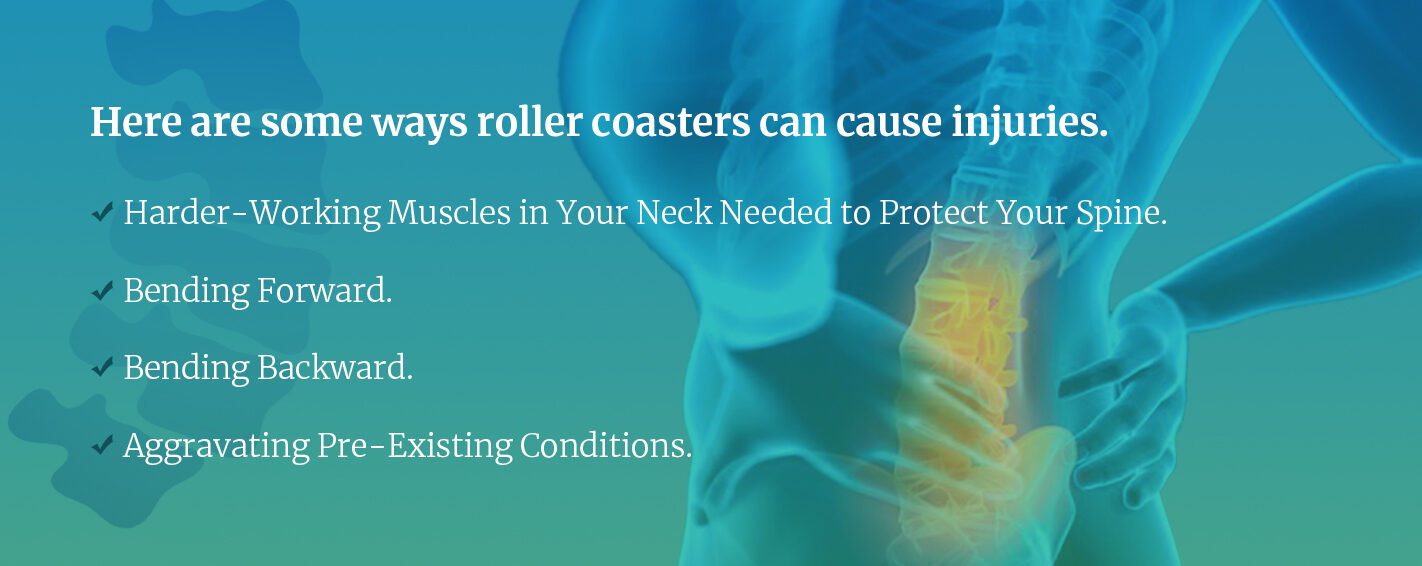Prepare Your Back Before the Ride
Roller coasters can subject your back to intense forces during quick accelerations, drops, and turns. These forces can strain your back muscles and cause pain. To prevent and relieve back pain from roller coasters, it’s important to strengthen and prepare your back beforehand. Here are some tips:
Perform core exercises like planks. Your core muscles support your back, so strengthening them can help reduce strain during roller coaster rides. Holding planks, in particular, helps build endurance in your core muscles. Aim for holding planks for 30 to 60 seconds, 2-3 times a week.
Stretch your back regularly. Gentle back stretches can loosen tight muscles and increase flexibility. Some good options include:
- Knee raises: Lie on your back and slowly raise one knee at a time towards your chest. Hold the back of your knee to pull it closer to your body.
- Cat-cow pose: Get on your hands and knees, then arch your back upward, pushing your stomach toward the floor. Next, lower your back downward while lifting your head upward. Slowly move back and forth between these two poses.
- Seated twist: Sit on the floor with your legs extended. Bend your right knee and place your right foot on the floor next to your left hip. Place your right hand behind you and twist your torso to the right. Hold and repeat on the other side.
Apply heat. Take a warm shower or bath and apply a heating pad to your back muscles before going to an amusement park. The heat will relax and loosen your muscles, making them less prone to strain during the roller coaster ride.
Stay hydrated. Drink plenty of water in the days leading up to and the day of the roller coaster ride. Hydration helps your muscles and joints work properly, reducing the likelihood of strain. Dehydration, on the other hand, can make back pain from muscle strain more likely.
Consider over-the-counter pain medication. Ibuprofen or naproxen can help reduce inflammation in the back muscles. Taking either one 1 to 2 hours before your roller coaster ride may help prevent back pain from developing. Be sure to follow dosage instructions and talk to your doctor first, especially if you have any underlying health conditions.

Sit in the Most Supportive Position
How you position yourself during the roller coaster ride can make a big difference in the strain on your back. Sitting in the proper position can help minimize discomfort, while other positions may aggravate your pain.
Sit with knees slightly higher than your hips. This helps maintain the normal arch in your lower back. If your knees are lower than your hips, it can cause excessive arching of the back and muscle strain.
Keep your back straight against the seat. Don’t slouch or hunch over. Sit up straight with your back flat against the seat back for maximum support. Engage your core muscles to keep your back straight when the ride begins.
Hold the grab bars securely but not too tightly. The grab bars are there for support, so hold onto them, especially when going over drops and turns. However, gripping them too tightly can cause tension in your shoulders, neck, and upper back. Keep a firm but not death grip on the bars.
Avoid twisting motions. Don’t twist from side to side or make sudden movements. Keep facing forward with your torso as much as possible. Twisting motions during the ride can exacerbate muscle strain in your back.
Avoid locking your elbows. Keep a slight bend in your elbows as you hold onto the grab bars or restraints. Locking your elbows can transmit forces directly into your upper back during accelerations and turns.
Brace Yourself During the Ride
While core exercises and proper positioning can help minimize back strain on roller coasters, bracing yourself during the most intense parts of the ride is also important:
Pull your shoulders back. Rounding your shoulders can strain your upper back. Pull your shoulders back to open your chest and engage your core muscles.
Look ahead at all times. Keep your head facing forward, not tilted back or to the side. Looking ahead helps keep your spine aligned and avoids neck strain.
Tighten your core muscles. Especially during drops, accelerations and turns, tighten your core by pulling your belly button in toward your spine. Your core muscles support your back, so engaging them helps avoid excess strain.
Bend knees and grip grab bars. When going over drops or turns, bend your knees and grip the grab bars for additional support and stability. Bending your knees helps absorb some of the forces before they reach your back.
Try to relax. While staying braced during intense parts of the ride, relax your body as much as possible during the rest of the ride. Tensing up too much for prolonged periods can lead to back muscle fatigue and soreness. Take deep breaths to help your body stay loose and relaxed.
Apply Ice and Take an OTC Pain Reliever After the Ride
Apply an ice pack to your back. As soon as possible after the roller coaster ride, apply an ice pack to your back for 15 to 20 minutes at a time, a few times per day. This can help reduce inflammation in your back muscles and relieve pain. Be sure to wrap the ice or ice pack in a towel to avoid skin irritation.
Take an over-the-counter pain reliever. Ibuprofen, naproxen or acetaminophen can help relieve back pain from muscle strain. Follow the dosage instructions on the packaging. These medications can help reduce pain and make other treatments like ice, heat and stretching more effective.
Get a massage. A massage therapist can apply deep tissue massage techniques to help relieve muscle tightness and back pain from roller coaster rides. Schedule a massage therapy appointment within a couple days of your theme park visit. Massage can help speed pain relief and recovery.
See a Doctor If Pain Persists
While most back pain from roller coasters will improve with self-care and conservative treatments, if your pain is severe or lasts more than a week, see your doctor for an evaluation. They may recommend:
Physical therapy. Targeted exercises and manual techniques performed by a physical therapist can help release muscle tightness and spasms, improving range of motion and relieving pain.
Chiropractic adjustments. Chiropractors use controlled thrusts to adjust your spine and joints to improve mobility and relieve pressure on back muscles, nerves, and discs. Multiple adjustments may be needed to address pain from muscle strain during roller coaster rides.
Medication or therapy injections. In some cases, prescription medication, steroid injections or other therapies may be suggested to relieve persistent or recurring back pain from roller coasters. These options may reduce inflammation, relax muscles spasms, and promote healing.
Additional testing. Imaging tests or scans may be ordered to check for muscle or tissue damage in case your pain does not improve with conservative treatments. While rare, muscle strain from roller coasters can potentially lead to injury of back muscles, connective tissues or vertebrae. More severe injuries may require more intensive therapy or intervention to heal.
With the combination of preparatory and self-care steps suggested in this article, the majority of people can enjoy roller coaster thrills with minimal risk of back pain or injury. However, it’s best to start slowly and listen to your body. Be mindful of any pain, as persisting or worsening discomfort may require medical advice. Never power through severe pain, as this may lead to more serious issues down the line. Have fun on your thrill rides but take proactive steps for wellness and safety.
